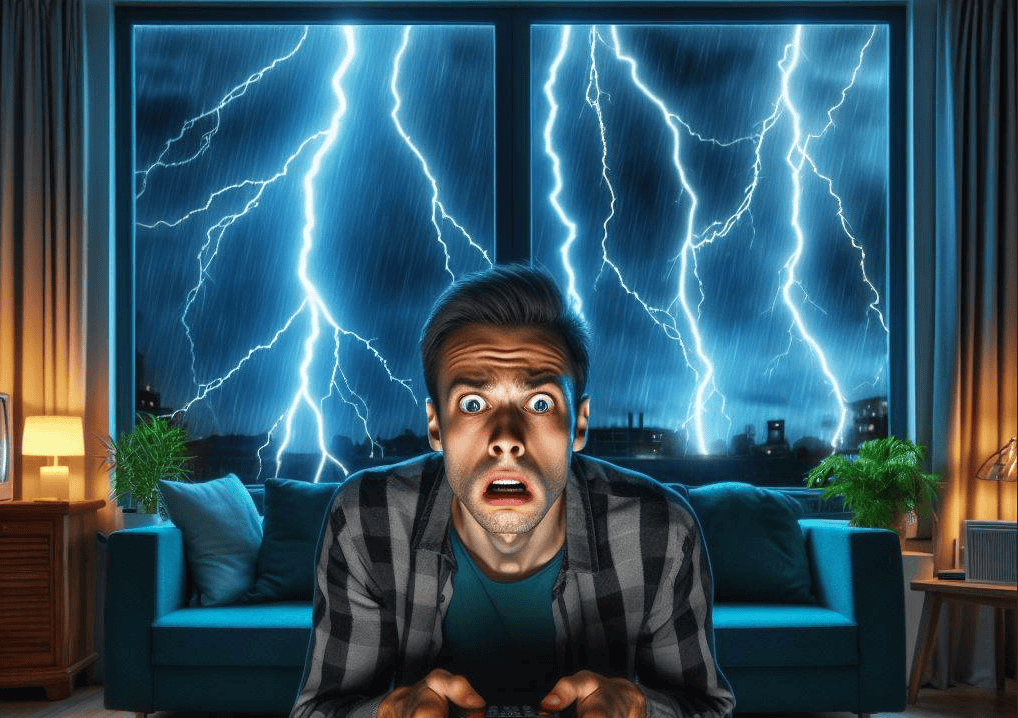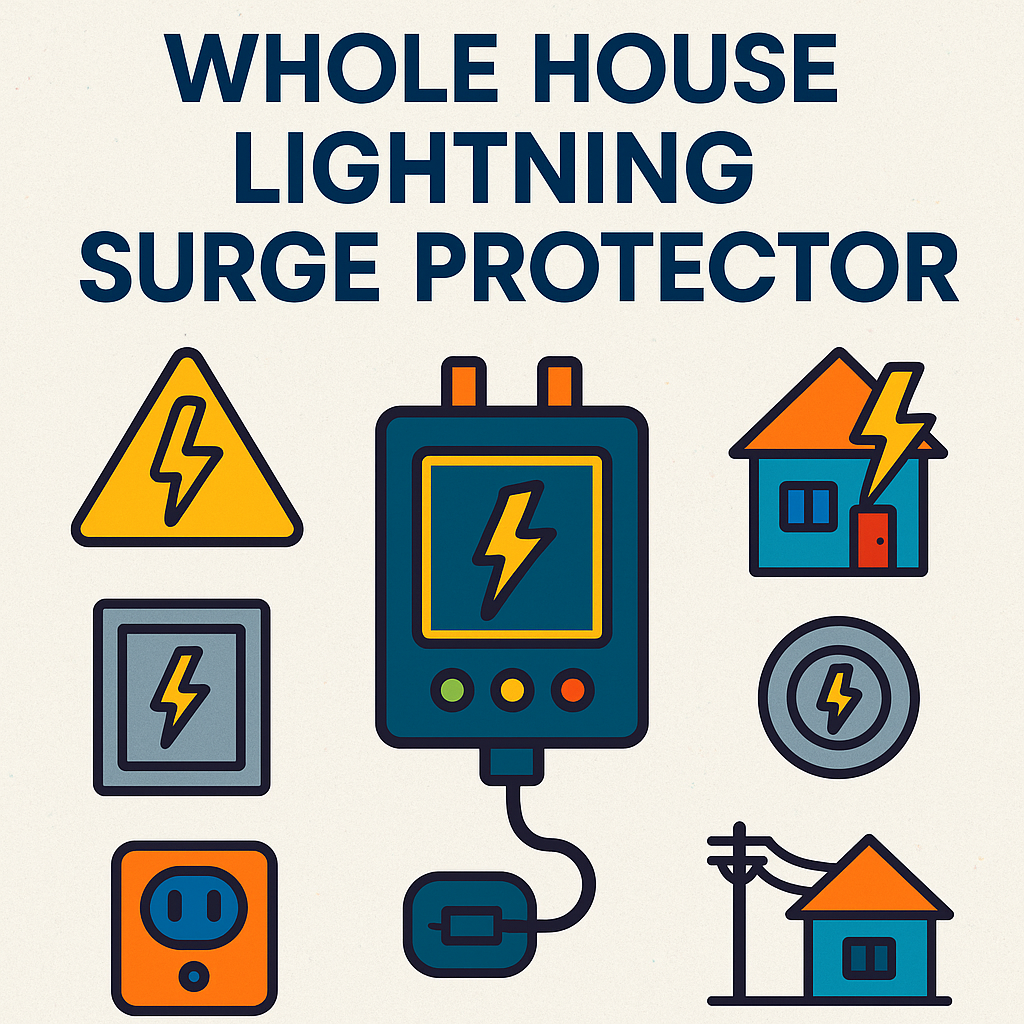Published By: Marc Edwards | Last updated on June 28, 2025 and reviewed by Editorial Team
They divert excess voltage into grounding wires to prevent damage to electronics and help stabilize voltage supply for consistent electricity flow, ultimately extending the lifespan of electronic devices. It is recommended to use surge protectors at all times to safeguard electronics.
As electronic devices increasingly become part of our daily routines, safeguarding them from unexpected power surges has become essential. Surge protectors provide a reliable defense, preventing potential damage caused by erratic voltage levels.
In this post, we will explore the applications and necessity of surge protectors, particularly their capability to protect your valuable electronic equipment.

The Basics of Surge Protectors
A surge protector protects electronics from voltage spikes or surges that can damage sensitive equipment. These spikes can be caused by many factors, such as lightning strikes, power outages, or fluctuations in the electrical grid.
Surge protectors work by diverting excess voltage from connected devices, ensuring only the appropriate amount of electricity reaches them.
There are three main types of surge protectors available – power strips, wall-mounted surge protectors, and whole-house surge protectors and 4 types of surge protector classifications that offer different levels of protection.
Each type offers varying levels of protection and can be chosen based on the specific needs of the electronics being used. It is important to use surge protectors to safeguard expensive equipment and prevent damage from unpredictable power surges.
Understanding Power Surges and What Causes Them
Power surges occur when there is a sudden, brief spike in electrical voltage or current in the power supply, which various factors, including lightning strikes, electrical faults, power grid issues, or the operation of high-power electrical devices.
Causes of Electrical Surges |
Usual Suspects |
|---|---|
| Lightning Strikes | Direct or nearby lightning strikes can introduce massive voltage spikes into the electrical system, causing power surges. |
| Electrical Faults | Faulty wiring, loose connections, or short circuits can lead to sudden voltage surges within the electrical system. |
| High-Powered Devices | Appliances that draw a significant amount of power, such as air conditioners, refrigerators, or washing machines, can cause voltage spikes when they start or shut off. |
| Power Grid Issues | Problems with the electrical grid, such as transformers malfunctioning or sudden changes in power supply, can result in voltage fluctuations and surges. |
These surges can significantly affect electronic devices, causing minor disruptions at best and leading to irreversible damage to their electronic components at worst.
Delicate circuits within these devices may not withstand the excessive electrical force, often resulting in short circuits or the loss of functionality. Although less frequent, severe surges, such as those from lightning, pose the greatest danger.
However, smaller, routine surges may occur more frequently in areas with unstable infrastructure or during specific events, such as storms, and sometimes go unnoticed until devices exhibit cumulative damage over time.
Importance of Surge Protectors
Surge protectors are essential in protecting our electronic devices from sudden power surges and spikes that can damage or destroy them. By using surge protectors, we can safeguard our expensive gadgets and appliances from potential electrical damage, ensuring they have a longer lifespan.
Not using surge protectors puts our devices at risk of damage from power fluctuations, leading to costly repairs or replacements. Investing in surge protectors is a smart choice to ensure the safety and longevity of our valuable electronics.
Types of Electronics Vulnerable to Surges
Among the myriad electronics at risk for surge damage, consumer electronics like televisions, computers, and game consoles are particularly susceptible due to their sensitive microprocessors. Home appliances, such as refrigerators, microwaves, and washing machines (although more robust), contain electronic components that are vulnerable to surges.
Replacing such damaged devices can be costly, straining household budgets or business operational expenses. Financial losses are compounded when you consider the loss of productivity or data resulting from computer damage.
Implementing surge protectors is a proactive strategy to safeguard these devices. These protective devices absorb or redirect the excess electrical energy away from connected equipment, thus extending their lifespan and ensuring functionality.
Using surge protectors not only preserves the integrity of electronic devices but also mitigates the potential financial repercussions involved with their replacements.
Surge Protector Features to Consider

When selecting a surge protector, there are several key factors to consider when shopping for the best protection for your electronic devices.
Two of the most important technical specifications to look for are joule ratings and clamping voltage.
Joule ratings indicate the amount of energy the surge protector can absorb before failing, with higher ratings offering better protection.
Clamping voltage refers to the voltage at which the surge protector will start to divert excess electricity away from your devices. A lower clamping voltage means better protection, as it allows the surge protector to react more quickly to smaller surges.
In addition to these technical aspects, it’s also worth considering any extra features that may be useful for your specific needs. The USB ports, number of outlets, and cable length you will need will depend on your personal needs and preferences. Features like response time and EMI/RFI filtering will depend on the type of electronics and appliances you have at home or in the office.
Finally, don’t forget to check the warranty offered by the manufacturer. A good surge protector should have a warranty that covers both the device itself and any connected equipment that may be damaged due to surge protection failure.
Look for models that offer extended warranties and higher coverage amounts for connected equipment, as this can provide added peace of mind and financial protection in the event of a severe power surge.
Features |
Description |
|---|---|
| Joule Rating | Indicates the amount of energy the surge protector can absorb before failing. Higher ratings offer better protection. |
| Clamping Voltage | The voltage at which the surge protector starts diverting excess electricity away from devices. Lower clamping voltage is better. |
| USB Charging Ports | Some surge protectors include USB ports for charging devices without occupying additional outlets, which can be convenient. |
| Warranty | Look for surge protectors with extended warranties and higher coverage amounts for connected equipment (financial protection). |
| Number of Outlets | Consider the number of outlets you need to accommodate all your devices. Some surge protectors offer more outlets than others. |
| Cable Length | Longer cable lengths offer greater flexibility in positioning the surge protector and allow for reaching distant outlets. |
| Response Time | A faster response time means the surge protector can react more quickly to sudden power spikes, providing better protection. |
| EMI/RFI Filtering | Electromagnetic interference (EMI) and radio-frequency interference (RFI) filtering help reduce unwanted noise in electronic signals. |
Environmental Factors Affecting Surge Protector Necessity
Environmental factors play a significant role in determining the necessity of surge protectors in protecting electronic devices from potential damage. The impact of weather on power surges is a critical consideration, particularly in areas prone to storms, lightning strikes, and power outages.
These weather-related events can create sudden voltage spikes that can overload electronic devices and cause irreparable damage. Geographic considerations also play a key role, as regions with unstable electrical grids or frequent electrical storms may require more robust surge protection measures.
Other environmental factors, such as the age and quality of electrical wiring in a building, can also influence the need for surge protection. Older wiring may not be equipped to handle sudden power surges, increasing the risk of damage to connected electronics.
The presence of nearby industrial equipment or power-hungry appliances can introduce fluctuations in power that could pose a threat to sensitive devices.
Considering and addressing these environmental factors is essential in determining the level of surge protection necessary to safeguard electronic devices and appliances. Investing in high-quality surge protectors and implementing proper protective measures can help prevent costly damage and downtime caused by power surges and electrical disturbances.
Final Thought
Surge protectors are essential for safeguarding electronic devices from power surges that can cause irreparable damage. Understanding the basics of surge protectors, the importance of surge protection, and the best practices for their usage can help individuals make informed decisions to protect their valuable electronics.
By considering the environmental factors and features of surge protectors, homeowners like you can ensure the longevity of your electronics and save on potential repair costs in the long run.








